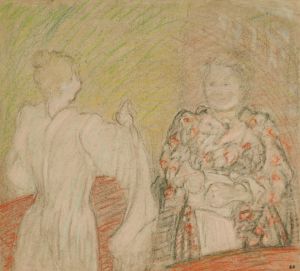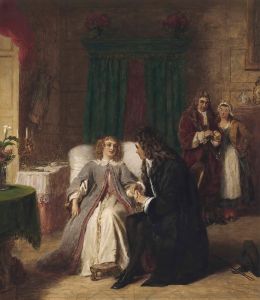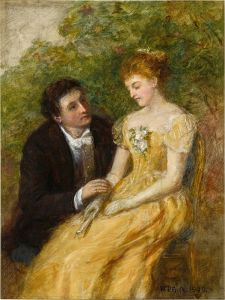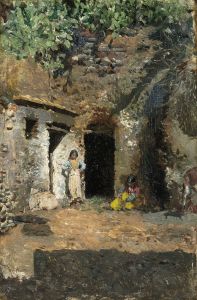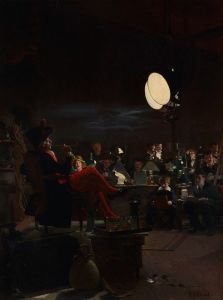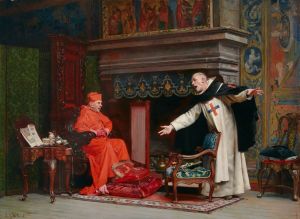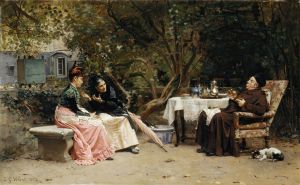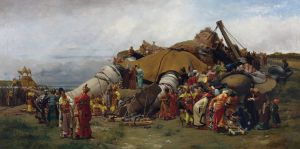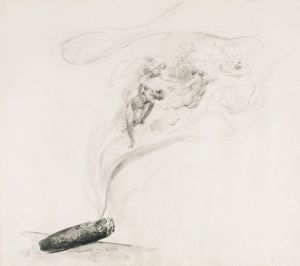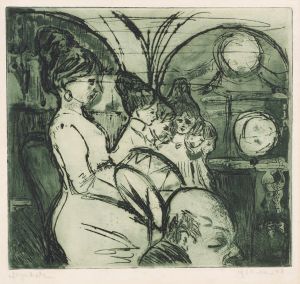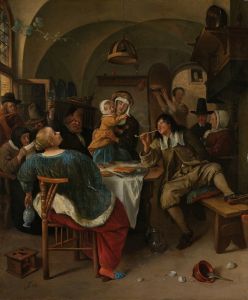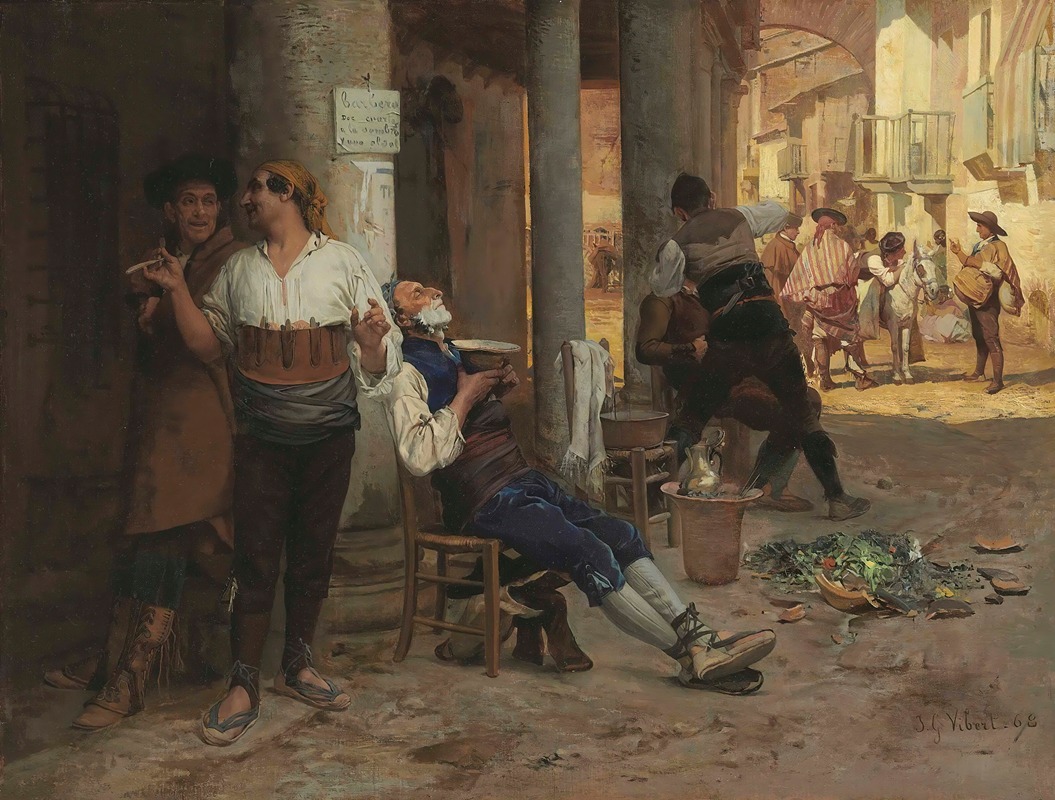
Barbier ambulant, Espagne
A hand-painted replica of Jehan Georges Vibert’s masterpiece Barbier ambulant, Espagne, meticulously crafted by professional artists to capture the true essence of the original. Each piece is created with museum-quality canvas and rare mineral pigments, carefully painted by experienced artists with delicate brushstrokes and rich, layered colors to perfectly recreate the texture of the original artwork. Unlike machine-printed reproductions, this hand-painted version brings the painting to life, infused with the artist’s emotions and skill in every stroke. Whether for personal collection or home decoration, it instantly elevates the artistic atmosphere of any space.
Jehan Georges Vibert (1840–1902) was a French academic painter known for his satirical and genre scenes, often depicting clergy and everyday life with a touch of humor and meticulous attention to detail. One of his works, Barbier ambulant, Espagne (translated as Traveling Barber, Spain), reflects Vibert's interest in capturing scenes of daily life and his skill in portraying character and narrative within his paintings.
The painting depicts a traveling barber in Spain, a figure that was a common sight in rural areas during the 19th century. Barbers at the time often served as multifunctional professionals, offering not only haircuts and shaves but also minor medical services such as tooth extractions. Vibert's work captures this aspect of traditional life with a focus on the interaction between the barber and his customer, set against a backdrop that suggests a Spanish locale. The artist's attention to costume, setting, and facial expressions provides a vivid snapshot of the period and the cultural context.
Vibert was known for his ability to infuse his works with narrative depth and subtle humor, and Barbier ambulant, Espagne is no exception. The painting demonstrates his technical skill in rendering textures, such as the fabrics of clothing and the tools of the barber's trade, as well as his talent for creating engaging compositions that draw the viewer into the scene. The work also reflects Vibert's broader interest in exploring themes of tradition and modernity, as the traveling barber represents a way of life that was gradually disappearing with the advent of urbanization and industrialization.
While Vibert is best known for his satirical depictions of clergy, Barbier ambulant, Espagne showcases his versatility as an artist and his ability to capture the essence of everyday life in a variety of cultural contexts. The painting is an example of his broader oeuvre, which often combined technical precision with a keen eye for storytelling.
As with many of Vibert's works, Barbier ambulant, Espagne is appreciated for its combination of artistic skill and cultural commentary. The painting remains a testament to Vibert's ability to document and interpret the world around him through his art. Further details about the painting's current location or provenance are not widely documented.





